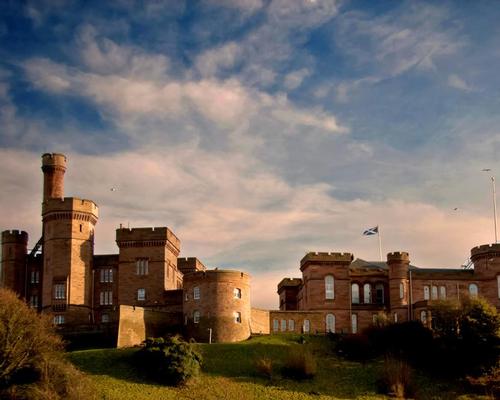16 May 2019
New tourist attraction for Inverness Castle, as LDN Architects appointed to transform site
BY Andy Knaggs

Inverness Castle in the Scottish Highlands is to be transformed into a tourist attraction that celebrates the Highlands' past, present and future, with LDN Architects, based in Edinburgh and Forres, appointed to work on the project.
The castle, which stands on a hill overlooking the River Ness, is more than 170 years old, although fortifications have stood on the ground for centuries. It's currently the base for the Scottish Courts and Tribunals Service but will soon be vacated.
LDN says the "vision" for the project includes galleries, museums, shops, restaurants, cafés and a new public space.
The project is led by the Highland Council, which has also appointed a creative director, Bryan Beattie from Creative Services, to work on it. It forms part of the £315m (US$406m, €363m) Inverness and Highland City-Region Deal from the UK and Scottish Governments.
The architect’s brief focuses on the refurbishment of the Castle, including dialogue with Historic Environment Scotland, the Highland Council, High Life Highland, the people of Inverness and the Highlands, as well as many other stakeholders in the coming months.
Creative Services will lead the creative direction for the project, supporting development of the identity for the new "international quality" Inverness Castle visitor attraction, as well as preparing a programme of events involving people living and working in the Highlands. It will also support the development of partnerships with creative producers, organisations, agencies and networks to maximise promotional and creative opportunities for the project.
The Scottish Government's Rural Economy minister Fergus Ewing said the project will "help to revitalise the city centre, as well as the wider Highlands, benefiting both locals and tourists".
A castle on the site was attacked by soldiers loyal to Mary, Queen of Scots in 1562, and in 1746 was blown up by Bonnie Prince Charlie's troops.
Close Window